When it comes to protecting your belongings for a move and shipping, the right supplies and materials can make all the difference. Let’s take a closer look at different packing materials, explore their uses and benefits, and provide expert tips for using them effectively. So, stuff it, wrap it, and box it up – let’s get started!
Why Is It Important to Use Different Types of Packing Materials When Moving Overseas?
The frequency of packages being damaged during shipping can vary depending on a number of factors, including the type of item being shipped, the wrapping materials used, the shipping carrier, and the distance of the shipment. According to some recent studies, the overall rate of packages being damaged during shipping is relatively low, at around 1-2% of all packages shipped.
Guaranteed prices for International Moving. No hidden fees or surprises!
However, this rate can be higher for certain types of items, such as fragile or high-value belongings. Proper wrapping techniques and the use of appropriate materials can help reduce the risk of damage during shipping. It is also important to choose a reputable international company and consider purchasing insurance for valuable items.
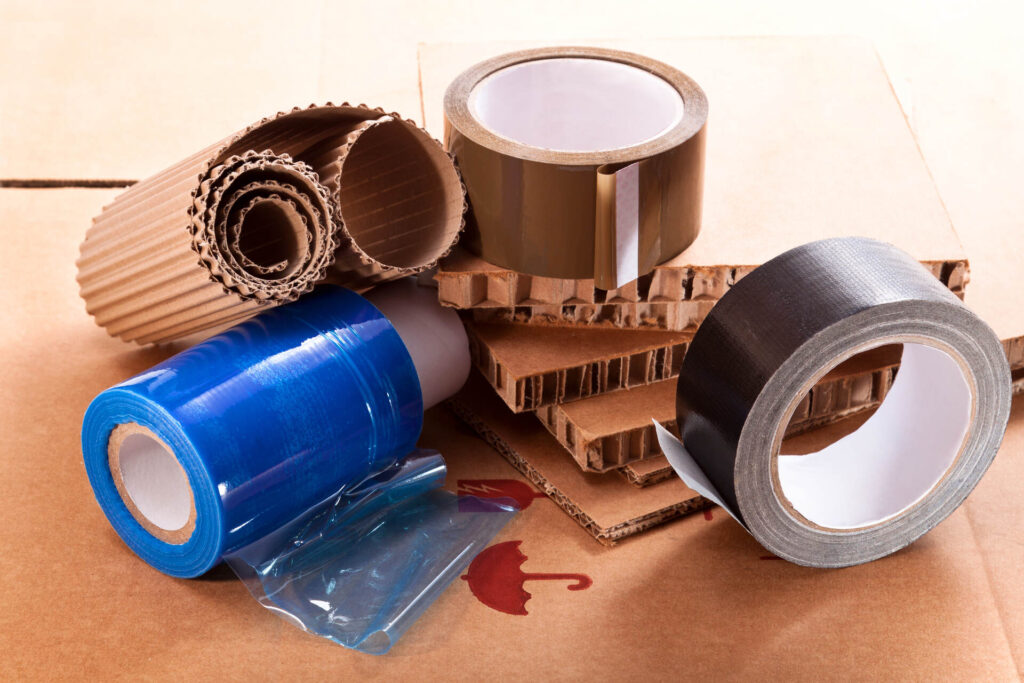
What Are the Uses of Bubble Wrap?
Bubble wrap is a popular and versatile wrapping material that is used to protect items during transportation. So, once you decide what to bring when relocating abroad, make sure you have enough of this material since it is good for filling empty spaces in the box.
Not only will it prevent items from shifting during transportation, but it can be used to insulate items from temperature changes. It helps maintain a consistent temperature inside the box, protecting items from heat or cold damage.
Tips for Using Bubble Wrap Effectively
Right after you book the best international moving services, you should pass on to planning the wrapping party accordingly. This means taking care of your fragile and delicate objects and avoiding some of the most common mistakes while doing it.
To use bubble wrap effectively, start by wrapping the item in several layers of bubble wrap. Use tape to secure the wrap in place, making sure that all edges and corners are covered. For larger items, consider using several pieces of bubble wrap to ensure complete coverage. For particularly delicate items, consider using double-layered bubble wrap or combining bubble wrap with other materials, such as peanuts or foam sheets, for extra protection.
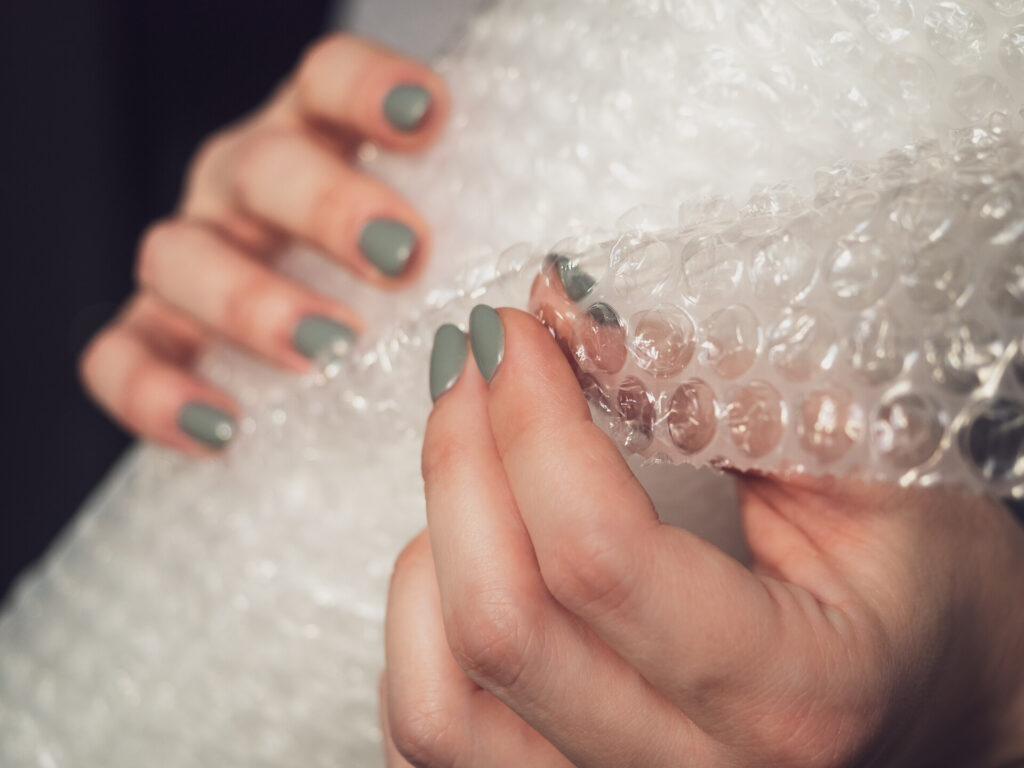
What Are the Uses of Packing Paper?
Like bubble wrap, wrapping paper is also a good material to protect your delicate objects. One of the relocation hacks you can use is to double it up. This means you should use multiple layers of this material, especially if planning to transport glassware and ceramics. International Moving Company also uses it as an additional cushioning for essential items – we crumple up it and fill any empty space in the box.
Tips for Using Packing Paper Effectively
Start by placing the item in the center of a sheet of wrapping paper, then fold the edges of the paper around the item. Tuck in any excess paper and tape the paper closed. For larger items, use multiple sheets of this material to ensure that the item is fully covered and protected.
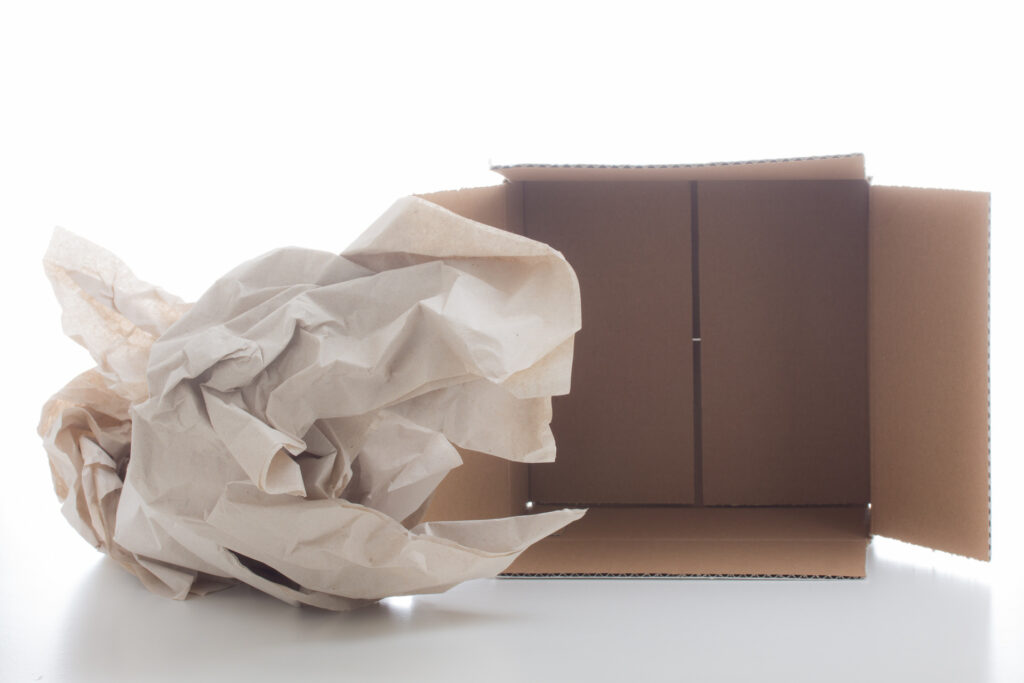
What Are the Uses of Packing Peanuts?
This super useful material is also known as foam peanuts or loose-fill, and it is commonly used for protecting items during transportation, so you should consider putting it on your to-do list. Besides filling the empty spaces in the box, they also ease the shipping costs by being lightweight.
Don’t forget these can be used as insulation to protect items from extreme temperatures during transportation. They help maintain a consistent temperature inside the box, protecting items from heat or cold damage.
Tips for Using Packing Peanuts Effectively
So, once you set aside everything that can’t be transported and what movers can’t move, it’s time to do some wrapping. Let’s see how to make the best of the foam peanuts.
- Use enough foam peanuts – That way, you’ll fill all the empty spaces inside the box. This will help prevent items from shifting and knocking against each other during transportation.
- Layer the foam peanuts – Layering them in the box will provide even cushioning and support to items. Start by adding a layer of foam peanuts to the bottom of the box, and then add a layer of items. Continue alternating layers of peanuts and items until the box is full.
- Shake the box – Do it gently after boxing up to make sure that the peanuts have settled and filled all the empty spaces inside the box.
Following these simple steps will ensure your stuff arrives safely in another country. However, we have to think about the environment, too, so you may want to consider using biodegradable foam peanuts made from cornstarch or other eco-friendly materials. These can break down easily and be disposed of safely.
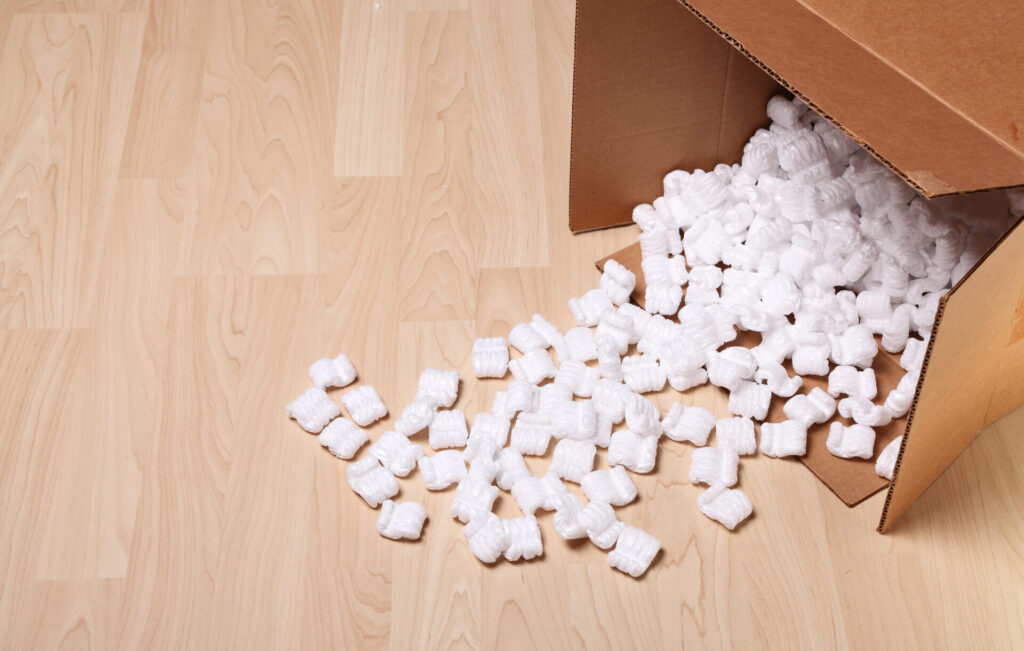
What Are the Uses of Foam Sheets?
Foam sheets are useful for protecting fragile and delicate items and other items during transportation. They are versatile, lightweight, and durable, making them a popular choice for protecting a wide range of items. With proper use, foam sheets can help ensure that items arrive at their destination in good condition.
Tips for Using Foam Sheets Effectively
There are many relocation tips on how to use this material since it’s versatile and easy to protect most of the stuff from a common relocation inventory. So, here are some common uses of foam sheets:
- Electronics – Foam sheets are often used to pack and protect delicate electronics, such as laptops, tablets, and smartphones. They provide cushioning and shock absorption to prevent damage during transportation.
- Glassware and china – Foam sheets are ideal for protecting delicate glassware and china during transportation. They can be wrapped around individual items to prevent them from knocking against each other and breaking.
- Artwork – They can be cut to size to fit the dimensions of the artwork, such as paintings and sculptures, and provide cushioning and protection during transport.
- Furniture – Foam sheets are used to protect furniture during transportation. They can be wrapped around the corners of furniture to prevent damage from bumps and scratches.
Foam sheets can also be used for industrial packaging, providing cushioning and protection for heavy machinery, electronics, and other equipment during transportation. So definitely put this on your wrapping supplies list.
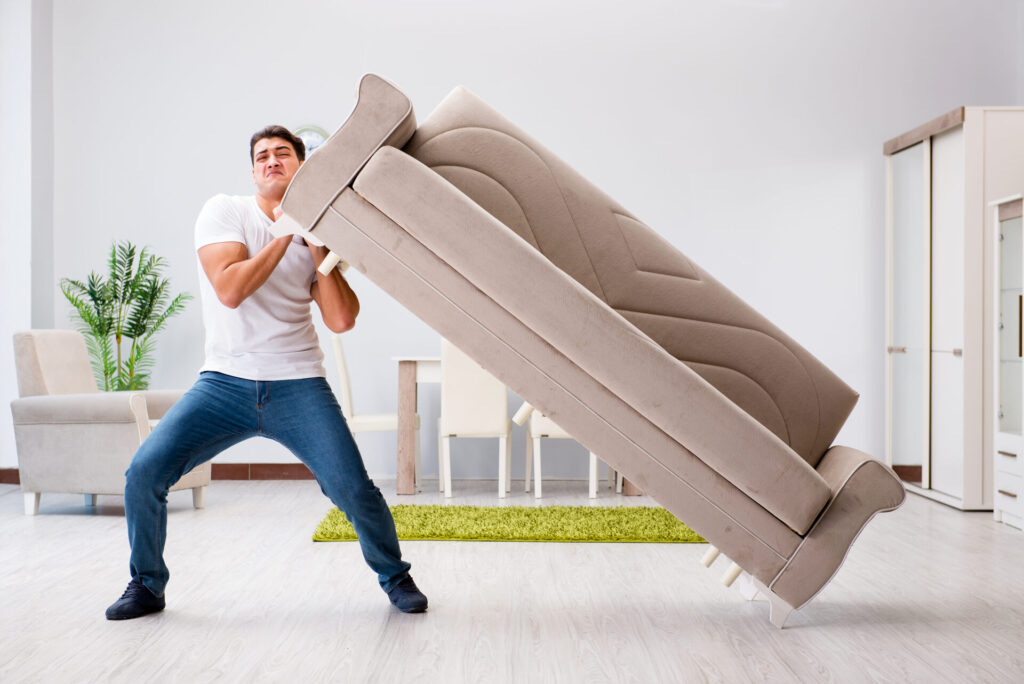
What Are the Uses of Boxes?
Boxes are versatile containers that can be used in a variety of ways, from shipping to storage units. With different sizes, shapes, and materials available, there is a box for every need. Boxes have a wide range of uses in various industries and settings, and they are commonly used for shipping items internationally from one place to another.
They provide a sturdy and uniform container that can be easily stacked and transported, ensuring the safe delivery of items. They are a great solution if you’re planning on using a storage unit. Your items will be organized and protected from dust.
Tips for Using Boxes Effectively
It’s important to have a variety of box sizes to ensure that items are packed effectively, no matter if you’re moving out for the first time or you’ve done it before. Having different-sized boxes allows you to pack items of different shapes and sizes and helps maximize space during transportation.
Large boxes are useful for storing lightweight, bulky items, while smaller boxes are ideal for heavier items. Medium-sized boxes can be used for a variety of items, including books, kitchenware, and electronics. By having a range of box sizes, you can pack your items in a way that minimizes the risk of damage and ensures that space is used efficiently.
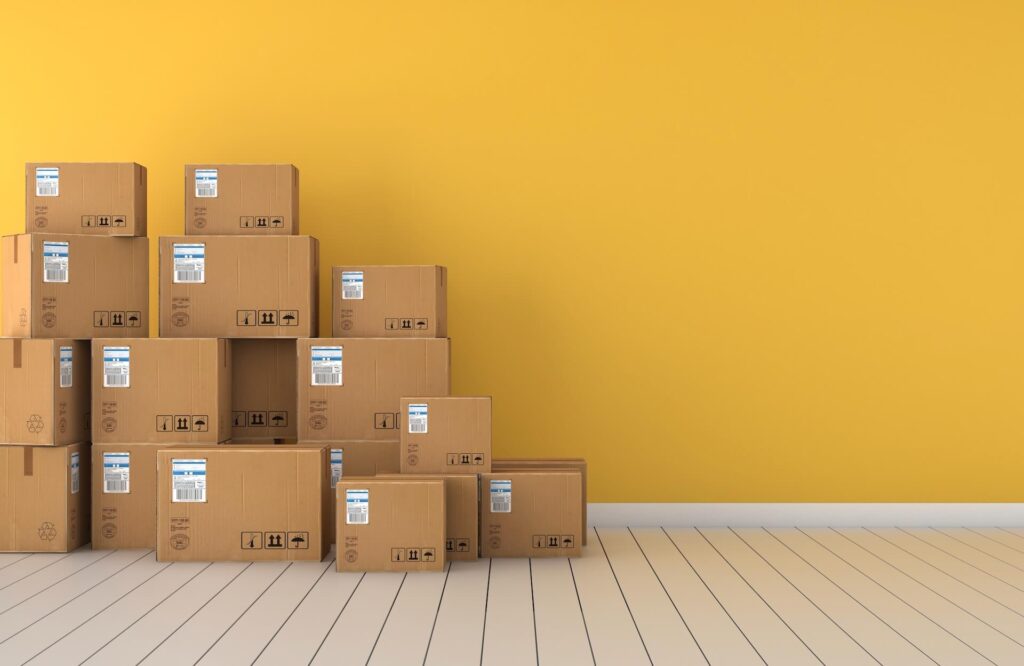
Label the Containers Adequately
Labeling containers is an important step, even if you’re having a last-minute relocation. It helps ensure that items are delivered to the correct destination and handled properly. Adequate labeling should include the following information:
- Contents – Clearly label the contents of each container to help identify the items inside. This will also make unpacking easier and more efficient.
- Fragile items – Label any containers that contain fragile or delicate items, such as glassware or electronics, with a “Fragile” label. This will alert handlers to take extra care when transporting these containers.
- Orientation – Label containers that need to be kept in a specific orientation, such as “This End Up,” to prevent damage during transportation.
- Numbering – Numbering the containers can help keep track of the number of containers being shipped and ensure that all containers are accounted for upon delivery.
With proper labeling, you can have peace of mind knowing that your items are being handled properly and delivered to the correct destination. Be sure to use clear and legible labels that are easy to read, and place the labels in a visible location on the container.
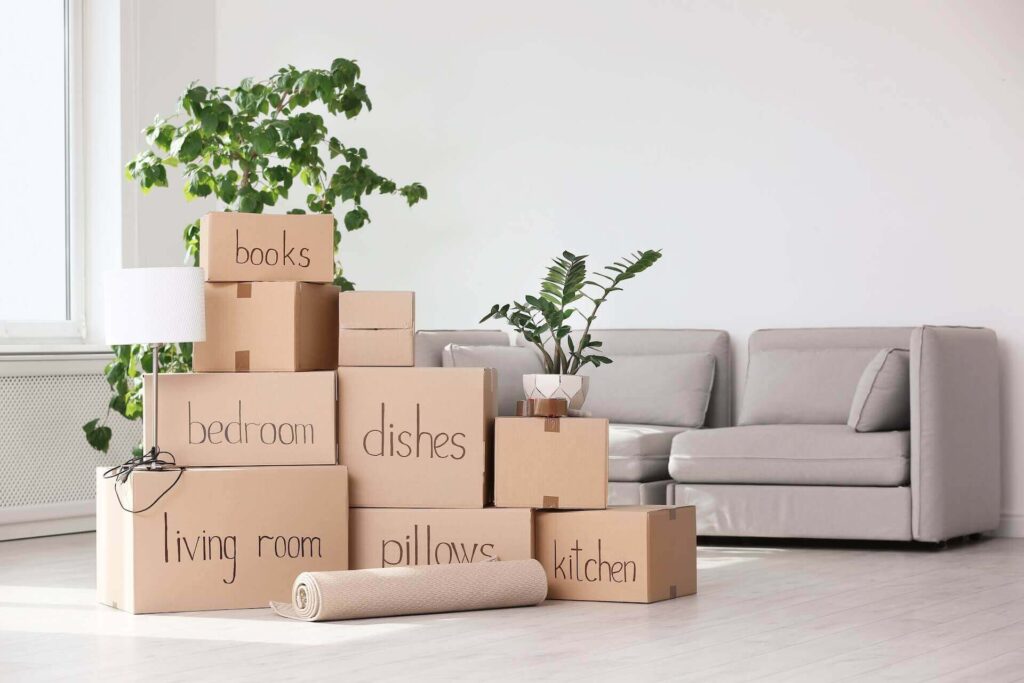
How to Choose the Right Packaging Materials
After all the hard work you put in deciding what to keep, don’t think it’s over yet. Choosing the right supplies and materials is crucial for protecting your items during transportation. Here are some factors to consider:
- Consider the size and weight of the item – Think about the stuff you want to protect and which material you’ll use that can adequately support and cushion the weight of the item.
- Consider the fragility of the item – Use the material that can provide enough cushioning and protection to prevent damage during transportation.
- Environmental conditions – Consider the environmental conditions during transportation. For items that may be exposed to water or moisture, use waterproof protective materials to protect against damage.
- Consider your budget – Choose the materials that are affordable and offer the necessary protection for your items.
Wrapping materials are essential for protecting items during transportation, and different types of those available are suited for different purposes. However, getting as much as possible wrapping materials is precisely what most people forget during the relocation.
By choosing the appropriate protective material based on the type of item being packed, you can help ensure the safe transport of your belongings. In fact, the right wrapping materials can help prevent damage and ensure your items arrive at their destination intact.
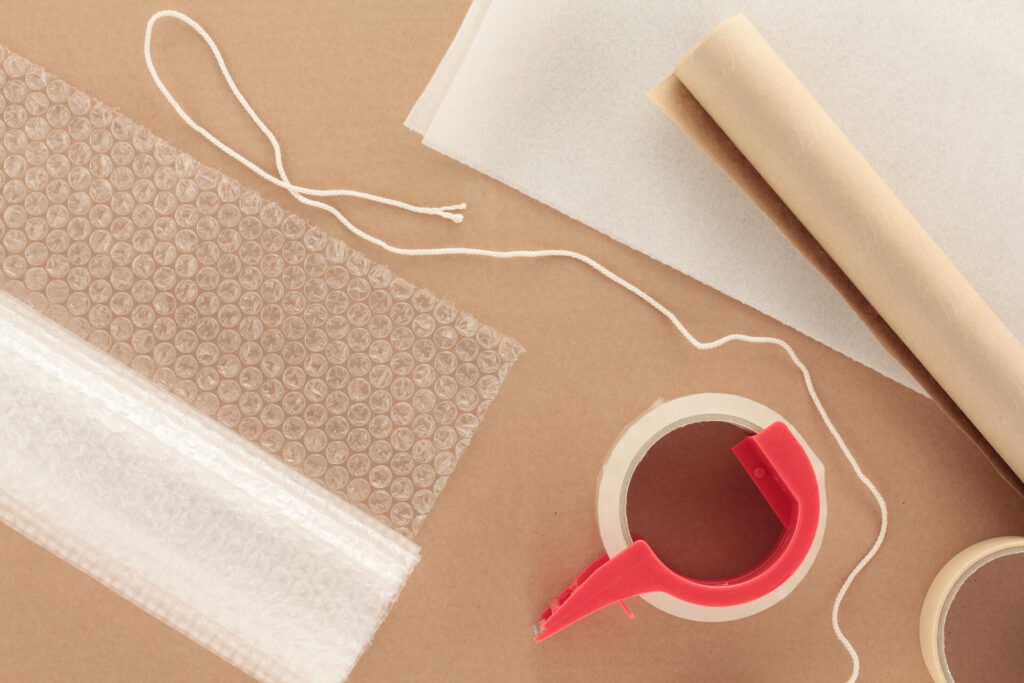
You Can Hire International Movers to Do All the Grunt Work for You
Once you decide it’s time to relocate and want to experience the easiest way to protect your belongings, then hiring international movers may be the solution for you. That’s the secure option for avoiding the hassle and hard work of wrapping your stuff for an international move.
Professional relocation companies have the expertise and resources to handle all aspects of your relocation, including transportation, overseas vehicle shipping, and assistance with packing service. This can give you peace of mind knowing that your belongings are in good hands and that the relocation will be efficient and stress-free.
Be Sure You’ve Chosen the Right International Mover
Choosing the right international mover is an important decision when relocating across the world, and there are several factors to consider before making your choice. That’s how you should look for a mover that has extensive experience in international moves. An experienced mover will have the knowledge and resources to handle the complex logistics involved when moving internationally.
Do your research and read reviews from past customers to get an idea of the mover’s reputation. Look for a mover with positive reviews and a track record of successful international moves. Firsthand experience is very valuable in these situations, so don’t forget to check with your family and friends for relocation company recommendations.

Get Different Packaging Materials, and Your Stuff Will Be Protected
Selecting the right materials is crucial for ensuring the safe transport of your items. With different types of wrapping materials available, it’s important to choose the appropriate materials that suit the size, weight, fragility, and mode of transportation of your items.
If you’re planning an international move and want a stress-free experience, contact International Moving Company today. We provide top-quality packaging materials and expert packing services to ensure your items are protected during transportation. Contact us now to get started and experience a hassle-free international move!
FAQ About Different Packing Materials
What Are the Different Types of Packing Materials?
There are several types of packaging materials available that are designed to protect and cushion items during transportation. Some of the most common types include bubble wrap, wrapping paper, foam peanuts, foam sheets, duct tape, corrugated cardboard, and packaging straps.
What Is Bubble Wrap and How Is It Used in Packing?
Bubble wrap is a type of protective material that consists of air-filled bubbles that are used to provide cushioning and protection to fragile items during transportation. It is a popular packaging material for a wide range of items, including electronics, glassware, and artwork. Bubble wrap comes in different sizes and can be easily cut to fit the size of the item being packed.
What Is Packing Paper and How Is It Used in Packing?
Packaging paper, also known as newsprint, is a type of paper that is used to wrap and protect items during transportation. It is an ideal material for fragile items such as glassware, dishes, and other delicate objects. Wrapping paper provides a layer of cushioning that helps prevent damage during transportation. It is also an affordable material that can be easily replaced when needed.
What Are Packing Peanuts and How Are They Used in Packing?
Peanuts are small foam pieces that are used to provide cushioning and fill empty spaces inside a package during transportation. They are particularly useful for protecting items that are irregularly shaped or that require extra protection. Peanuts help prevent the movement of items inside the package, reducing the risk of damage during transportation.
What Are Foam Sheets and How Are They Used in Packing?
Foam sheets are lightweight and durable foam materials that are used for packaging fragile items. They are designed to provide excellent cushioning and protection to delicate objects such as electronics, glassware, and artwork. Foam sheets can be easily cut to size, making them adaptable to a wide range of items.
What Types of Items Are Best Packed in Boxes?
Boxes are best suited for packaging a wide range of items, including books, clothing, kitchenware, electronics, glassware, artwork, and office supplies. Boxes provide a sturdy and uniform container that can be easily stacked and transported, making them a popular choice for shipping and moving.
How Do I Choose the Right Packing Materials for My Items?
To choose the right supplies and materials for your items, consider the size and weight of the item, its fragility, and the mode and duration of transportation. For fragile items, use materials such as bubble wrap, wrapping paper, and foam sheets to provide cushioning and protection. For heavy items, choose sturdy boxes and duct tape to secure the contents.
What Factors Should I Consider When Selecting Packing Materials?
When selecting materials, it’s important to consider the size and weight of the item, its fragility, the mode and duration of transportation, and the environmental conditions during transportation. These factors will help determine the level of cushioning required and the appropriate materials to use, such as bubble wrap, wrapping paper, foam sheets, and peanuts.
What Are Some Packing Techniques for Different Types of Items?
Wrapping techniques vary based on the type of item being packed. For books, it’s best to pack them flat in a box, alternating spine and cover facing down. Clothing should be folded neatly and packed in a box or suitcase. For kitchenware, wrap each item in wrapping paper or bubble wrap and pack them in a box with foam peanuts or foam sheets. Electronics should be wrapped in bubble wrap and packed in a box with foam sheets.
How Can I Pack Fragile Items Using Different Packing Materials?
When protecting your fragile possessions, wrap each item in multiple layers of packaging paper and bubble wrap, and place it in a box filled with foam peanuts or foam sheets to prevent movement during transportation. Be sure to seal the box with duct tape and label it as “fragile” to ensure proper handling.
